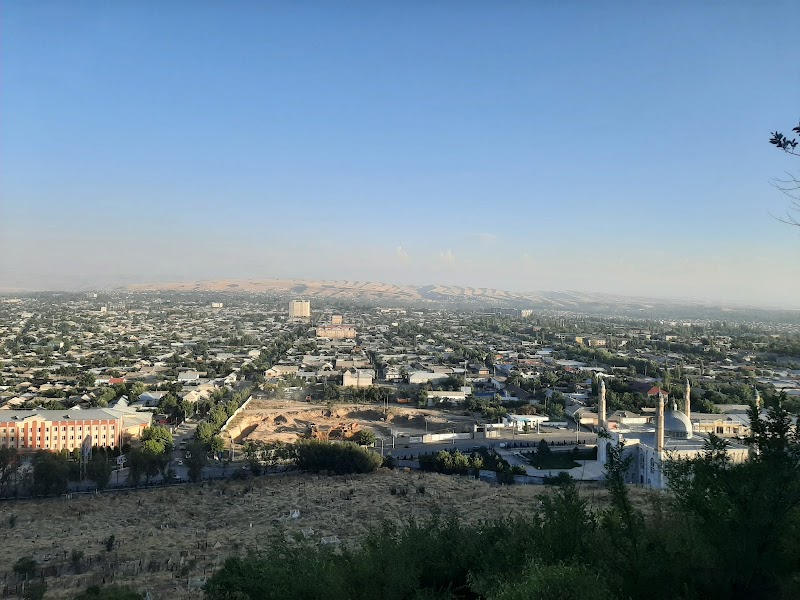
Nowruz Festival in Osh, Kyrgyzstan, signals the vibrant arrival of spring with festive rituals, traditional foods, and outdoor adventures around the historic city. Experience age-old cultural celebrations framed by dramatic landscapes that invite both lively participation and contemplative exploration.
Wear layered clothing for variable March weather
Mornings and evenings can be cold, while midday sun can be warm, so dressing in layers helps regulate body temperature.
Bring sturdy shoes for Sulayman Mountain hikes
The mountain’s rocky, uneven paths require good traction to navigate safely, especially if damp from spring rains.
Stay hydrated between festival events and hikes
Carry a refillable water bottle; the dry air combined with physical activity can lead to dehydration quickly.
Use local guides to enhance cultural understanding
A guide can provide insights into Osh’s mixed cultural heritage and explain the significance behind Nowruz customs and landmarks.
Nowruz Festival in Osh: Celebrate Spring’s Awakening in Kyrgyzstan’s Ancient City
As winter loosens its grip on the rugged landscapes surrounding Osh, the city bursts into vibrant energy with the arrival of Nowruz, the Persian New Year marking the start of spring. This age-old festival, celebrated on March 21st, invites visitors to join in a blend of cultural traditions and outdoor festivities that firmly root the experience in Kyrgyzstan's rich heritage. Osh, one of Central Asia’s oldest settlements, comes alive as local communities engage in public dances, traditional music performances, and the preparation of symbolic dishes like sumalak — a hearty wheatgrass pudding that honors renewal and prosperity.
The spirit of Nowruz extends beyond city squares into the surrounding nature. The nearby Sulayman Mountain, a UNESCO World Heritage site, frames the celebrations, inviting adventurers to explore its steps climbed for centuries. The moderate ascents here provide sweeping views over the city and the Fergana Valley, alive now with spring blooms pushing through earth still cooling from winter. The mountain’s rough stone paths and uneven terrain require good footwear and a steady pace but reward with quiet spots to absorb the season’s changes amid the scent of warming pine and fresh earth-like aromas.
Beyond the mountain, the bustling Osh bazaar mirrors Nowruz’s theme of rejuvenation. Stalls display fresh herbs, colorful fruits, and traditional crafts perfect for souvenirs that carry the festival’s vibe. The festival also offers opportunities to meet locals who share stories about regional customs and the unique blend of Kyrgyz, Uzbek, and Tajik influences.
Planning your visit around Nowruz means arriving prepared. March’s weather is unpredictable—mornings can bite with lingering cold, while midday sun warms the city and hikes alike. Layered clothing and a quality water bottle are essentials as you move between indoor celebrations, outdoor ceremonies, and hiking routes. For those interested in capturing the festival, early morning and late afternoon offer sharp light that highlights the vibrant costumes and the surrounding hills' rugged outlines.
Nowruz is more than a date on the calendar; it is a practice of respect for the land and community, a chance to engage with Kyrgyzstan’s cultural heartbeat and surrounding natural forces that remain fiercely themselves. Whether watching horse games that test skill and strength or trekking around Sulayman Mountain, your experience blends celebration with the call of the land’s enduring spirit.
Nearby Trips
All Adventures
Boat Charters
Water Activities
Adventures near Osh, Kyrgyzstan
Discover the unique and memorable adventures that make Osh, Kyrgyzstan special.
Frequently Asked Questions
What is the historical significance of the Nowruz Festival in Osh?
Nowruz has been celebrated in Central Asia for centuries as the start of the new year and spring renewal. In Osh, it blends Persian traditions with local Kyrgyz culture, reflecting the city’s role as a regional crossroads.
Are there any special local dishes to try during Nowruz?
Yes, the festival features sumalak, a slow-cooked wheatgrass pudding symbolizing growth and fertility, along with traditional meat dumplings, fresh herbs, and seasonal fruits from the Osh bazaar.
Is Sulayman Mountain accessible during the Nowruz Festival?
Yes, the mountain is open year-round, and its paths are especially scenic in spring. Be prepared for muddy patches and wear suitable footwear.
What wildlife might I encounter near Osh during Nowruz?
In spring, you may spot songbirds like the Turkestan tit and watch marmots emerging from hibernation near Sulayman Mountain’s foothills.
Are there any environmental considerations to keep in mind during the festival?
Respect local customs regarding litter and fire safety. The mountain is a protected site; refrain from disturbing wildlife or damaging native plants.
What are some lesser-known viewpoints around Osh for festival photography?
Explore the southern slopes of Sulayman Mountain for panoramic cityscapes at dawn, and the quiet terraces behind the old bazaar offer intimate scenes of festival preparations.
Recommended Gear
Sturdy hiking boots
Essential for gripping the rocky, sometimes wet paths on Sulayman Mountain.
Layered clothing
Allows adjustment to rapidly changing temperatures from cold mornings to warm afternoons.
Reusable water bottle
Keeps you hydrated throughout hikes and long festival days in dry air.
Portable power bank
Useful for keeping devices charged during photography and navigation in remote areas.
Local Insights
Hidden Gems
- "Old Bazaar terraces for authentic festival interactions"
- "Small tea houses behind Sulayman Mountain offering local fare"
- "Quiet groves near the mountain base with early blooming wildflowers"
Wildlife
- "Turkestan tit (bird species)"
- "Marmots on mountain slopes"
- "Migratory butterflies attracted by spring blooms"
History
"Osh is one of Central Asia’s oldest cities, a commercial and cultural hub along Silky Road routes. Sulayman Mountain has spiritual significance dating back over 3,000 years with ancient petroglyphs and sacred sites."
